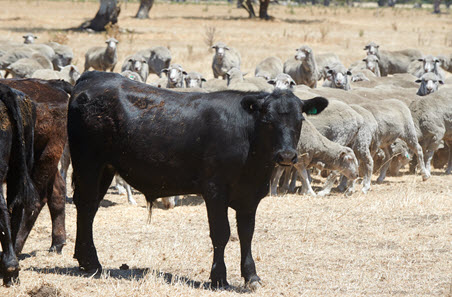Join myMLA
One username and password for key integrity and information Systems (LPA/NVD, NLIS, MSA & LDL).
Red meat market projections
Severe weather conditions throughout Australia caused a tumultuous start to the year for both beef and lamb. Here’s a quick summary on the impact in the markets.

Lamb
The poor conditions that marred 2018 will have a significant impact on sheepmeat supply in 2019, with lamb slaughter forecast to be its lowest since 2012. Dry conditions, which have led to substantial drops in marking rates and the extensive culling of ewes and ewe lambs, underpins the forecast for a 7% decline in lamb slaughter in 2019, at 21.2 million head.
Many producers are still waiting for consistent rainfall to help alleviate the pressures associated with high feed costs. Considering the substantial moisture deficiencies apparent in many regions, particularly NSW, any improvement in conditions would require consistent ‘above-average’ rainfall over the coming months. As a result, sheep slaughter is forecast to remain near long-term averages at 8 million head, but back from the large numbers processed in 2018.
Both sheep and lamb carcase weights were impacted by the tough conditions and high cost of feed in 2018. This is expected to continue in 2019 with feedstocks depleted and feed demand to remain high until conditions improve. A fall in slaughter and carcase weights drives the 7% forecast decline in lamb production for 2019 to 475,000 tonnes carcase weight (cwt). Mutton production will likely see a steeper drop of 16% to 188,000 tonnes cwt.
For more information click here.
Beef
It’s been a tumultuous start to the year for the cattle industry, with drought and flooding heavily impacting slaughter and herd levels. Dry conditions during summer have driven a continuation of the herd liquidation and combined with stock losses from the floods in north-west Queensland (estimated between 500,000 to 700,000 head), will result in the largest drop in the national herd in decades. Much-needed rainfall in many drought-stricken parts of Queensland through March provided some reprieve, but many producers destocked heavily throughout summer, as feed costs and lack of stock water left them with few alternatives.
Forecast adult slaughter for 2019 has been revised slightly higher, but is still expected to be below 2018 levels at 7.7 million head. The revision is largely driven by harsher-than-expected seasonal conditions during the first quarter and subsequent accelerated slaughter.
Feedlots have remained near capacity, but lower entry weights and the high cost of feed has impacted feeding margins. Elevated female slaughter and lighter sale weights, due to poor pasture conditions, have led to lower carcase weights so far this year. This trend in carcase weights is forecast to continue, which combined with slaughter figures, will underpin a 3% decline in production this year, to an estimated 2.2 million tonnes carcase weight (cwt).
For more information click here.


